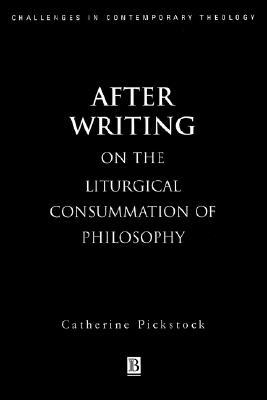 Jeffrey Tucker skriver på TLM-bloggen om hvor mye mer vanlig den tradisjonelle messen er blitt (mange steder) de siste årene. Og en av grunnene/ forløperne til denne forandring, som for alvor kom i 2007, er en doktorgrad i filosofi skrevet av Catherine Pickstock. Slik skriver han om henne:
Jeffrey Tucker skriver på TLM-bloggen om hvor mye mer vanlig den tradisjonelle messen er blitt (mange steder) de siste årene. Og en av grunnene/ forløperne til denne forandring, som for alvor kom i 2007, er en doktorgrad i filosofi skrevet av Catherine Pickstock. Slik skriver han om henne:
We know of the many milestones that made this happen but a hugely important one is often overlooked. It was a book that appeared in 1997. The title is After Writing: The Liturgical Consummation of Philosophy. The author: philosopher Catherine Pickstock. The book came as something of a shock, partially because of its brilliance and partially because, so little that is both new and true ever appears in any field. This book was both.
Here thesis spoke directly to the philosophical nihilism of our age, as channeled through the deconstructionist mode of thinking that began in mid-20th century and continues to this day. In this tradition of thought, much of what we believe has fixed meaning and consists of true propositions are really social and cultural fabrications filter through our own subjective understandings. Through this line of thinking, many categories of thought have been falling into the abyss: law, language, literature, sexual identity, and much more. ….
… so how does Pickstock fit in here? Pickstock’s thesis was utterly unpredictable and stunningly brilliant. She is willing to concede every one of the deconstructionist arguments in every field in which they have traditionally been applied. But, she said, there is one field that this critique cannot apply: liturgy. Why? Because liturgy makes special claims that other fields do not make. It comes from God and is delivered back to God in forms that developed over time through the experience of many generations working through a system of belief that seeks to communicate out of the limits of time. Its forms borrow from revelation and seek to perfect the presentation in light of the lived prayer lives and rituals of countless people and over a period of time that extends beyond any existing regime of elites. Thus does it lack the arrogance of the truth claims that are made for law, literature, or even plain language. Liturgy is defined by its deference to what has come before, and it is improved only in small forward motions and always in the context of that striving for contact with the eternal.
In the course of the argument, she singled out the pre-Trent Roman Rite for special investigation. Her presentation ran probably 10,000 words, piece by piece, and she explained so much that we might otherwise take for granted. Reading that section created a kind of love in the reader that one might not have had before, and there was a serious critique of modern liturgy embedded here.
Det kom også noe konkret ut av dette, skriver Tucker:
Now, here is some history that I don’t think has been put into print. For the Cardinal Archbishop of New York, John Cardinal O’Connor, had already heard that this phenom was in town. So when we all went to Mass that Sunday, he was very excited to meet her. When they met, Pickstock and he spoke and spoke, but at some point she said gently to him: «I understand that you do not have the Tridentine form of the Missal at this Cathedral? Would you consider permitting it. His response came immediately: «Absolutely. Consider it done.»
Then … to everyone’s amazement … it was done. This was years before Summorum Pontificum but the decision had a huge influence on the changing culture of the Catholic liturgy. …
